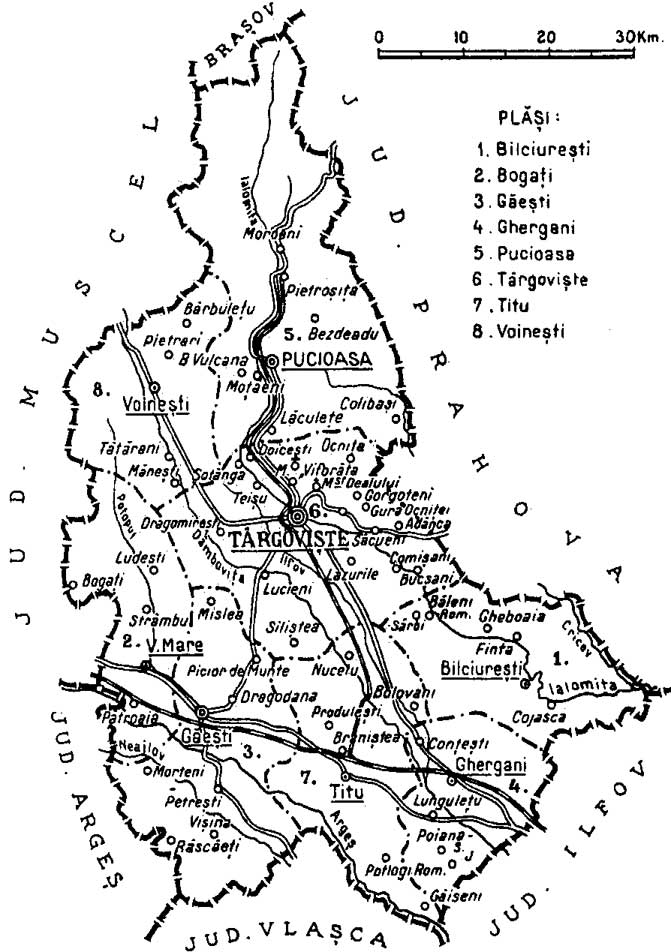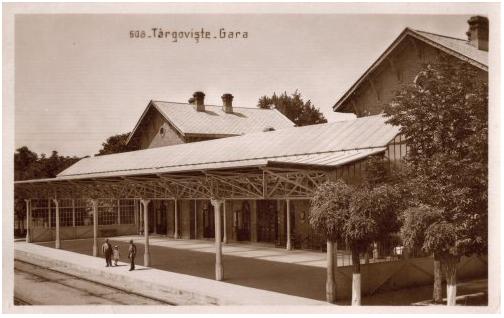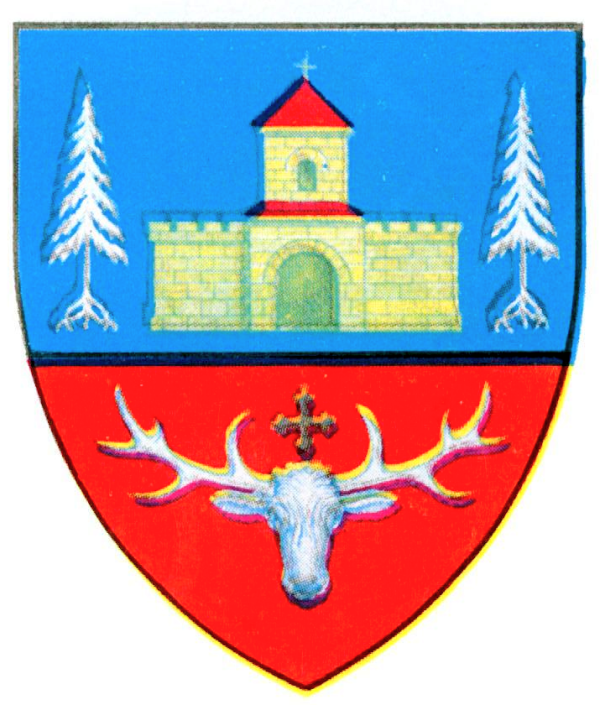|
Tătărani
Tătărani is a commune in Dâmbovița County, Muntenia, Romania with a population of 5,228 people as of 2021. It is composed of four villages: Căprioru, Gheboieni, Priboiu, and Tătărani. The commune is situated in a hilly area between the Wallachian Plain and the Southern Carpathians. It lies on the banks of the Dâmbovița River; the river Aninoasa discharges into the Dâmbovița in Căprioru village. Tătărani is located in the northwestern part of Dâmbovița County, from the county seat, Târgoviște, on the border with Argeș County. It is traversed on the left bank of the Dâmbovița River by national road , which connects Târgoviște to Câmpulung Câmpulung (also spelled ''Cîmpulung'', , , Old Romanian ''Dlăgopole'', ''Длъгополе'' (from Middle Bulgarian), or ''Câmpulung Muscel'') is a municipiu, city in Argeș County, Muntenia, Romania. It is attested on the Fra Mauro map fro .... References Communes in Dâmbovița County Localities in Mun ... [...More Info...] [...Related Items...] OR: [Wikipedia] [Google] [Baidu] |
Dâmbovița County
Dâmbovița County (; also spelt Dîmbovița) is a county () of Romania, in Muntenia, with the capital city at Târgoviște, the most important economic, political, administrative and cultural center of the county. It is a traditional administrative unit, first attested in 1512. Demographics In 2021, it had a population of 479,404 and the population density was 120/km2. It is one of the most densely populated counties in Romania. * Romanians – 87.09% * Roma - 3.96% * Bulgarians - 0.31% * Serbians 0.1% * Others - 0.13% * Unknown - 8.41% Name The county is named after the Dâmbovița River, which is a name of Slavic origin, derived from ''Дъб, dâmb'', meaning "oak", as it once flowed through the oak forests of the Wallachian Plain. Geography Dâmbovița county has a total area of 4,054 km2 (1.7% of the country's surface). It is situated in the south-central part of the country, on the Ialomița and Dâmbovița river basins. The highest altitude is Omu Pe ... [...More Info...] [...Related Items...] OR: [Wikipedia] [Google] [Baidu] |
Commune In Romania
A commune (''comună'' in Romanian language, Romanian) is the lowest level of administrative subdivision in Romania. There are 2,686 communes in Romania. The commune is the rural subdivision of a Counties of Romania, county. Urban areas, such as towns and cities within a county, are given the status of ''Cities in Romania, city'' or ''Municipality in Romania, municipality''. In principle, a commune can contain any size population, but in practice, when a commune becomes relatively urbanised and exceeds approximately 10,000 residents, it is usually granted city status. Although cities are on the same administrative level as communes, their local governments are structured in a way that gives them more power. Some urban or semi-urban areas of fewer than 10,000 inhabitants have also been given city status. Each commune is administered by a mayor (''primar'' in Romanian). A commune is made up of one or more villages which do not themselves have an administrative function. Communes ... [...More Info...] [...Related Items...] OR: [Wikipedia] [Google] [Baidu] |
Muntenia
Muntenia (, also known in English as Greater Wallachia) is a historical region of Romania, part of Wallachia (also, sometimes considered Wallachia proper, as ''Muntenia'', ''Țara Românească'', and the rarely used ''Valahia'' are synonyms in Romanian). It is situated between the Danube (south and east), the Carpathian Mountains (the Transylvanian Alps branch) and Moldavia (both north), and the Olt River to the west. The latter river is the border between Muntenia and Oltenia (or ''Lesser Wallachia''). Part of the traditional border between Wallachia/Muntenia and Moldavia was formed by the rivers Milcov and Siret. Geography Muntenia includes București - Ilfov, Sud - Muntenia, and part of the Sud-Est development regions. It consists of nine counties entirely: * Brăila * Buzău * Călărași * Argeș * Dâmbovița * Giurgiu * Ialomița * Ilfov * Prahova And parts of four others: * Teleorman (the entire county with the exception of Islaz) * Vrancea (southern p ... [...More Info...] [...Related Items...] OR: [Wikipedia] [Google] [Baidu] |
Romania
Romania is a country located at the crossroads of Central Europe, Central, Eastern Europe, Eastern and Southeast Europe. It borders Ukraine to the north and east, Hungary to the west, Serbia to the southwest, Bulgaria to the south, Moldova to the east, and the Black Sea to the southeast. It has a mainly continental climate, and an area of with a population of 19 million people. Romania is the List of European countries by area, twelfth-largest country in Europe and the List of European Union member states by population, sixth-most populous member state of the European Union. Europe's second-longest river, the Danube, empties into the Danube Delta in the southeast of the country. The Carpathian Mountains cross Romania from the north to the southwest and include Moldoveanu Peak, at an altitude of . Bucharest is the country's Bucharest metropolitan area, largest urban area and Economy of Romania, financial centre. Other major urban centers, urban areas include Cluj-Napoca, TimiÈ™ ... [...More Info...] [...Related Items...] OR: [Wikipedia] [Google] [Baidu] |
Wallachian Plain
The Romanian Plain () is located in southern Romania and the easternmost tip of Serbia, where it is known as the Wallachian Plain (). It is part of the larger Eurasian Steppe. It is located in the historical region of Wallachia, and bordered by the Danube River in the east, south, and west and by the in the north. Bucharest, the capital of Romania, is located in the central part of the Romanian Plain. It is contiguous to the south with the Danubian Plain () in Bulgaria. The Romanian Plain is also sometimes referred to as the Danubian Plain () in the Romanian language, though this designation is not specific, because the Danube flows through a number of plains along its course, including the Hungarian Plain (which is called the Danubian Plain in Slovakia and Serbia), as well as the Bavarian Lowland, which is also sometimes called the Danubian Plain. Subdivisions In Romania, the plain is divided into five subdivisions and the Danube Valley, which are, from West to East: *A. O ... [...More Info...] [...Related Items...] OR: [Wikipedia] [Google] [Baidu] |
Southern Carpathians
The Southern Carpathians (also known as the Transylvanian Alps; ; ) are a group of mountain ranges located in southern Romania. They cover the part of the Carpathian Mountains located between the Prahova River in the east and the Timiș and Cerna Rivers in the west. To the south they are bounded by the Balkan Mountains in eastern Serbia. Heights The Southern Carpathians are the second highest group of mountains in the Carpathian Mountain range (after Tatra), reaching heights of over 2,500 meters. Although considerably smaller than the Alps, they are classified as having an alpine landscape. Their high mountain character, combined with great accessibility, makes them popular with tourists and scientists. The highest peaks are: * Moldoveanu Peak, 2,544 metres – Făgăraș Mountains * Negoiu, 2,535 metres – Făgăraș Mountains * Parângu Mare, 2,519 metres – Parâng Mountains * Omu Peak 2,514 metres – Bucegi Mountains * Peleaga, 2,509 metres – Retezat Mou ... [...More Info...] [...Related Items...] OR: [Wikipedia] [Google] [Baidu] |
Dâmbovița (river)
The DâmboviÈ›a () is a river in Romania. It has its sources on the Curmătura Oticului, a mountain pass that separates the Iezer Mountains from the FăgăraÈ™ Mountains proper. It passes through Bucharest and flows into the river ArgeÈ™ near BudeÈ™ti, in CălăraÈ™i County. Its length is and its basin size is . DâmboviÈ›a County is named after the river. Name The name of the DâmboviÈ›a is of Slavic origin, derived from Common Slavic '' dÇ«bÅ'' (дѫбъ), meaning "oak", as it once flowed through the oak forests of the Wallachian Plain. Its upper course, upstream from the Valea Vladului, is also called ''Valea Boarcășului''. DâmboviÈ›a in Bucharest For centuries, DâmboviÈ›a was the main source of drinking water for the city of Bucharest. While there were a few dozen water wells, most of the water in Bucharest was distributed by water-carriers.Ștefan Ionescu, ''BucureÈ™tii în vremea fanarioÈ›ilor'', Editura Dacia, Cluj, 1974. p. 28-30 Bucharest folklore mentio ... [...More Info...] [...Related Items...] OR: [Wikipedia] [Google] [Baidu] |
Aninoasa (Dâmbovița)
The Aninoasa is a right tributary of the river Dâmbovița in Romania Romania is a country located at the crossroads of Central Europe, Central, Eastern Europe, Eastern and Southeast Europe. It borders Ukraine to the north and east, Hungary to the west, Serbia to the southwest, Bulgaria to the south, Moldova to .... It discharges into the Dâmbovița in Căprioru. e-calauza.ro Its length is and its basin size is . References Rivers of Romania Rivers of Dâmbovița County {{Dâmbovița-river-stub ...[...More Info...] [...Related Items...] OR: [Wikipedia] [Google] [Baidu] |
Târgoviște
Târgoviște (, alternatively spelled ''Tîrgoviște'') is a Municipiu, city and county seat in Dâmbovița County, Romania. It is situated north-west of Bucharest, on the right bank of the Ialomița (river), Ialomița River. Târgoviște was one of the most important cities in the history of Wallachia, as it was its capital from 1418 to 1659. At the 2021 Romanian census, 2021 census, the city had a population of 66,965 people, making it the 27th largest in the country. Etymology The name ''Târgoviște'' is a Slavic name which the city acquired in the Middle Ages. It is derived from the old Slavonic word for "marketplace", referring to the place rather than the market itself. The name is found in placenames not only in South Slavic areas (Bulgarian , Serbian and Croatian '), but also in West Slavic such as Slovak ''Trhovište'', Czech ''Trhoviště'' or Polish ''Targowica, Lower Silesian Voivodeship, Targowica''. Additionally, places with the same name are found in Romania, ... [...More Info...] [...Related Items...] OR: [Wikipedia] [Google] [Baidu] |
ArgeÈ™ County
Argeș County () is a county (''județ'') of Romania, in Muntenia, with the county seat at Pitești. Demographics At the 2021 Romanian census, 2021 census, the county had a population of 569,932 and the population density was . At the 2011 Romanian census, 2011 census, it had a population of 612,431 and the population density was . * Romanians – 97% * Romani people in Romania, Roma (Gypsies) and Minorities of Romania, other ethnic groups – 3% Geography This county has a total area of . The landforms can be split into 3 distinctive parts. In the north side there are the mountains, from the Southern Carpathians group – the Făgăraș Mountains with Moldoveanu Peak (2,544 m), Negoiu Peak (2,535 m) and Vânătoarea lui Buteanu peak (2,508 m) towering the region, and in the North-East part the Leaotă Mountains. Between them there is a pass towards Brașov, the Rucăr–Bran Pass. The heights decrease, and in the center there are the sub-carpathian hills, with heights aro ... [...More Info...] [...Related Items...] OR: [Wikipedia] [Google] [Baidu] |
Roads In Romania
Public roads in Romania are ranked according to importance and traffic as follows: *motorways (autostradă – pl. autostrăzi) – colour: green; designation: A followed by one or two digits *expressways (drum – pl. drumuri express) – colour: red; designation: DEx followed by one or two digits and an optional letter *national road (drum național – pl. drumuri naționale) – colour: red; designation: DN followed by one or two digits and an optional letter *county road (drum județean – pl. drumuri județene) – colour: blue; designation: DJ followed by three digits and an optional letter; unique numbers per county *local road (drum – pl. drumuri comunale) – colour: yellow; designated DC followed by a number and an optional letter; unique numbers per county Some of the national roads are part of the European route scheme. European routes passing through Romania: E58; E60; E70; E85; E79; E81; E68; E87 (Class A); E574; E576; E581; E583; E671; E771. ... [...More Info...] [...Related Items...] OR: [Wikipedia] [Google] [Baidu] |
Câmpulung
Câmpulung (also spelled ''Cîmpulung'', , , Old Romanian ''Dlăgopole'', ''Длъгополе'' (from Middle Bulgarian), or ''Câmpulung Muscel'') is a municipiu, city in ArgeÈ™ County, Muntenia, Romania. It is attested on the Fra Mauro map from 1450 as Campo longo. It is situated among the outlying hills of the Southern Carpathians, at the head of a long well-wooded glen traversed by the river Râul Târgului, Târgului, a tributary of the river ArgeÈ™ (river), ArgeÈ™. History Near Câmpulung are the remains of Jidava (castra), Jidava (or Jidova) Roman fort built around 190–211 AD on the frontier of the empire, the Limes Transalutanus; and just next to it, vestiges of a Roman colony, variously identified with Romula, Stepenium and Ulpia Traiana Sarmizegetusa, Ulpia Traiana. Now called ''GrădiÈ™tea'' (meaning ''place of a fortress'' in Romanian) or ''Jidovi''. Campulung was also important because it was only 37 km away from the Bran Pass an important trade and mil ... [...More Info...] [...Related Items...] OR: [Wikipedia] [Google] [Baidu] |




